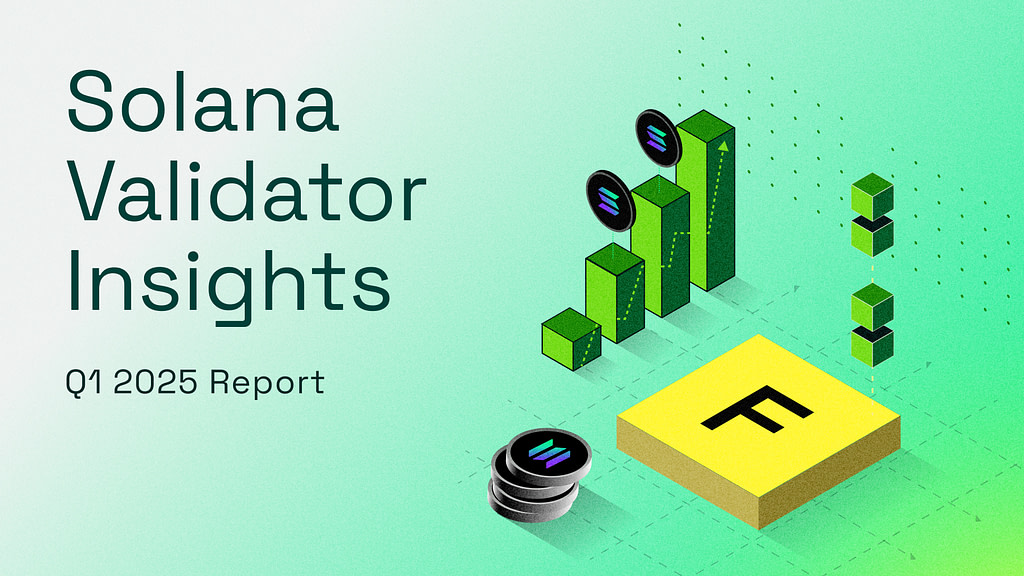Solana’s focus as a blockchain is: “Increase Bandwidth, Reduce Latency.”
SIMD-0033 introduced Timely Vote Credits (TVC), a change to how validators earn inflation rewards on Solana as an ongoing effort to reduce latency.
TVC realigns Solana’s inflation rewards mechanism for validators, to reward voting on consensus faster (ie latency). Activated in November 2024 during Epoch 703, TVC represents a fundamental shift in how validators earn inflation rewards, directly incentivizing faster consensus participation and reducing network latency.
For institutional stakers, this change brings important implications for validator selection and rewards optimization. As validators compete to minimize vote latency and earn maximum credits, the quality of validator infrastructure and operations becomes increasingly critical to staking rewards. This report explores how TVC works, its impact on the Solana network, and what it means for institutional stakers.
What are Timely Vote Credits?
“Increase Bandwidth, Reduce Latency” is a rallying cry of Solana’s ecosystem. Timely Vote Credits (TVC) “Reduces Latency” by incentivizing and rewarding non-leader validators to submit their consensus votes faster on recent slots. Put simply, validators earn more credits for votes that have “less latency” than votes with “more latency.
TVC is a latency incentives improvement to align validator inflation incentives to the vote credit mechanism.
What are vote credits though? Vote credits are an accounting method to calculate what percentage of Solana inflation rewards a given validator earns for its delegators.
Pre-TVC, whenever a slot that a validator voted on is “rooted”, it earns 1 vote credit. A “rooted” slot is one that has been finalized. The problem with this mechanism is that it awards one credit per rooted slot, regardless of when it was voted on. Practically, a validator could delay voting for many slots and only vote on slots with a high probability to become rooted. More importantly, this voting lagging strategy meant high-latency voting validators who did not contribute to meaningful consensus voting, got equal rewards as validators who did contribute to consensus, and did not help “reduce latency!”
Post-TVC, validators are awarded a variable number of vote credits per vote, per slot. “Less latency” = more vote credits, votes with “more latency” = less vote credits. Here, we’ll introduce the term “Vote Latency” by SIMD-0033 author Bryan Ischo. He defines “Vote Latency” as: “the difference, in slots, between the slot being voted on within a vote transaction, and the slot in which the vote transaction itself lands. The minimum possible vote latency for any voted-on slot is 1, since a vote on a slot must land no earlier than the slot immediately following the slot being voted on. For example, if a vote transaction which included slot 1000 were voted on in a transaction that was included in the block at slot 1003, then the vote latency for the vote on that slot would be 3.”
Each validator vote, earns a maximum of 16 vote credits, if vote latency is ≤ 2 slots. Vote credits decrease by 1 for each subsequent rooted slot, to a minimum of 1. A Solana epoch is 432000 slots in length, meaning the theoretical maximum vote credits per epoch is 6,912,000.
How Do Vote Credits Become Inflation Rewards?
Inflation rewards are proportional to how many vote credits the delegated validator’s vote account earned and all actively delegated stake. After each epoch, the in-protocol calculates “reward points” for each active stake account.
Reward points = Stake Delegation Amount * Amount of Validator Vote Credits Earned
Then, for a given epoch:
Total Distribution of Inflation Rewards = Latest Inflation Rate * Total Active Stake
This amount is then distributed to validators in proportion to each active stake account’s earned reward points.
This incentivizes each validator to reduce their “vote latency” by voting faster and on recent slots to earn full inflation rewards for their delegators. If all validators earned an exactly equal amount of vote credits, all inflation rewards are proportional to the active stake. TVC’s introduction of vote latency means vote credits earned for each vote relies on how quickly a validator votes on recent slots.
Let’s use an example. Validator A’s vote latency is high (slow) and often votes on the wrong fork (poor consensus). Validator B’s vote latency is slow (fast) and accurately. Validator B earns proportionally more vote credits than Validator A. Any stake with validator B is distributed a higher inflation reward rate on their delegated stake than any stake to validator A.
Why TVC is Important to Figment’s Delegators
Post-TVC activation, validators are now incentivized properly to reduce their “vote latency” to properly reward their delegators.
At Figment, we continuously improve hardware, validator geographic distribution and research new Solana client optimizations, so our validators earn full inflation rewards for our loyal Solana delegators. These include:
- Upgrading our bare-metal hardware as new, higher-performant equipment comes to market to ensure hardware is not our bottleneck to reduce latency
- Migrating a validator from North America to Europe to reduce vote latency
- Researching new validator clients or relayer optimizations such as Paladin, Frankendancer and Temporal.
Solana continues their improvements and efforts to “Increase Bandwidth and Reduce Latency.” Timely Vote Credits align validators to reduce vote latency, reward validators who actually contribute to consensus, and encourages validators to continuously optimize their setup to reduce latency.
Stake SOL with Figment
Figment provides the complete staking solution for over 700+ institutional clients, including asset managers, exchanges, wallets, foundations, custodians, and large token holders, to earn rewards on their digital assets.
On Solana, Figment is one of the largest non-custodial staking providers of staked SOL. Institutional staking services from Figment include seamless point-and-click staking, portfolio reward tracking, API integrations, audited infrastructure, and slashing protection. This is just one part of Figment’s mission to support the adoption, growth, and long-term success of the digital asset ecosystem.




